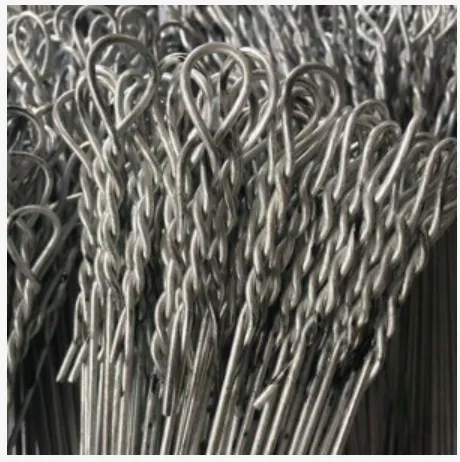-
 Phone:
Phone: -
 Email:
Email:

razor wire
The Significance and Uses of Razor Wire in Security Measures
Razor wire, a lethal variant of barbed wire, has become a critical component in the realm of security applications. Often associated with prisons, military bases, and high-security facilities, razor wire serves not only as a physical barrier but also as a psychological deterrent against unauthorized access. This article explores the various dimensions of razor wire, including its design, applications, and implications in security.
Understanding Razor Wire
Razor wire consists of sharp blades or barbs made from stainless steel or galvanized steel, which are affixed to a core wire. This design not only provides a formidable barrier against intruders but also poses a significant risk of injury, making it less likely for individuals to attempt to breach the fence. The effectiveness of razor wire relies on its sharp edges and the visibility it provides, signaling to potential trespassers the severe consequences of attempting to negotiate it.
The two most common types of razor wire are concertina wire and flat wrap wire. Concertina wire is wound into a spiral, allowing for easy deployment across a large area. In contrast, flat wrap wire is used in configurations where space is limited but security needs are still paramount. Both types serve their purpose admirably, adapting to various environment needs and enhancing security.
Applications of Razor Wire
The use of razor wire spans numerous fields, with a primary focus on security
. Here are some key applications1. Prisons and Correctional Facilities One of the most recognized applications of razor wire is in prisons. It acts as a crucial component in the perimeter security of correctional facilities, preventing inmates from escaping and deterring any external attempts to breach the facility.
2. Military Installations Military bases use razor wire to secure sensitive areas and deter unauthorized individuals from entering. The strategic placement of razor wire on fences and barriers helps safeguard personnel, equipment, and vital infrastructure.
razor wire

3. Industrial and Commercial Properties Companies, especially those that deal with valuable goods or sensitive materials, often install razor wire fencing to protect their assets. Industries such as oil and gas, telecommunications, and recycling heavily rely on razor wire to safeguard their premises against theft and vandalism.
4. Residential Properties In high-risk neighborhoods, homeowners may also choose to integrate razor wire as part of their security measures. It provides a visible deterrent to potential burglars, thereby adding an extra layer of protection around the home.
The Psychological Deterrent
The presence of razor wire serves a dual purpose physically preventing access and psychologically deterring potential intruders. The sheer appearance of razor wire can instill fear and caution in would-be trespassers. This psychological aspect is often underappreciated but plays a pivotal role in security; effective deterrence can lead to fewer attempts at breaching a property, allowing security personnel to focus on monitoring and response rather than dealing with actual breaches.
Legal and Ethical Considerations
While razor wire is effective, its use also raises legal and ethical questions. In many jurisdictions, regulations exist concerning the installation and visibility of razor wire, particularly in residential areas. The potential for injury and the aggressive appearance of razor wire can lead to public criticism and concerns regarding human rights and safety. Therefore, it is crucial for organizations and individuals to balance security needs with community standards and ethical considerations.
Conclusion
Razor wire remains a ubiquitous tool in security measures around the globe. Its formidable design and impactful presence contribute significantly to the safety and security of a wide range of properties. However, as with any security measure, it is vital to navigate the complexities surrounding its use thoughtfully and responsibly, ensuring that the security it provides does not come at the cost of safety or ethical standards. As society continues to evolve, the application and perception of razor wire will certainly adapt, but its core purpose as a deterrent will likely remain unchanged.
-
Wire Mesh for Every Need: A Practical SolutionNewsJul.25,2025
-
Steel Fences: Durable, Secure, and Stylish OptionsNewsJul.25,2025
-
Roll Top Fencing: A Smart Solution for Safety and SecurityNewsJul.25,2025
-
Cattle Farm Fencing Solutions for Maximum SecurityNewsJul.25,2025
-
Affordable Iron Binding Wire SolutionsNewsJul.25,2025
-
Affordable Galvanized Wire SolutionsNewsJul.25,2025
-
Wire Hanger Recycling IdeasNewsJul.25,2025








